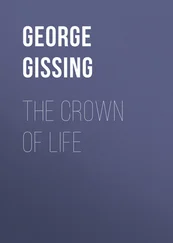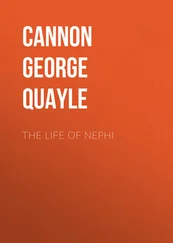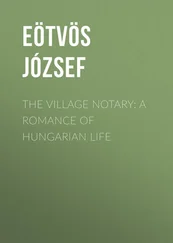George Elliot - The Romance of Plant Life
Здесь есть возможность читать онлайн «George Elliot - The Romance of Plant Life» — ознакомительный отрывок электронной книги совершенно бесплатно, а после прочтения отрывка купить полную версию. В некоторых случаях можно слушать аудио, скачать через торрент в формате fb2 и присутствует краткое содержание. Жанр: foreign_antique, foreign_prose, на английском языке. Описание произведения, (предисловие) а так же отзывы посетителей доступны на портале библиотеки ЛибКат.
- Название:The Romance of Plant Life
- Автор:
- Жанр:
- Год:неизвестен
- ISBN:нет данных
- Рейтинг книги:4 / 5. Голосов: 1
-
Избранное:Добавить в избранное
- Отзывы:
-
Ваша оценка:
- 80
- 1
- 2
- 3
- 4
- 5
The Romance of Plant Life: краткое содержание, описание и аннотация
Предлагаем к чтению аннотацию, описание, краткое содержание или предисловие (зависит от того, что написал сам автор книги «The Romance of Plant Life»). Если вы не нашли необходимую информацию о книге — напишите в комментариях, мы постараемся отыскать её.
The Romance of Plant Life — читать онлайн ознакомительный отрывок
Ниже представлен текст книги, разбитый по страницам. Система сохранения места последней прочитанной страницы, позволяет с удобством читать онлайн бесплатно книгу «The Romance of Plant Life», без необходимости каждый раз заново искать на чём Вы остановились. Поставьте закладку, и сможете в любой момент перейти на страницу, на которой закончили чтение.
Интервал:
Закладка:
"Cradled in snow and fanned by Arctic air,
Shines, gentle Barometz, thy golden hair,
Rooted in earth each cloven hoof descends,
And round and round her flexile neck she bends,
Crops the grey coralmoss and hoary thyme,
Or laps with rosy tongue the melting rime,
Eyes with mute tenderness her distant dam,
Or seems to bleat, a vegetable lamb."
Such is the old idea of a well-known fern, Cibotium barometz .
Yet the original researches of some African "Obi" wizard or red Indian were not forgotten, and gradually came into practice.
It must be remembered that these savages were true scientific experimentalists, and made discoveries which have been of infinite service to mankind. We remember great men like Harvey, Lister, and Pasteur, but we never think of the Indian who discovered quinine.
The quinine trees, the yellow variety or Calisaya cinchona , grow in the mountains of north-eastern Bolivia and south-eastern Peru, in wild, inaccessible places at heights of 5000 to 6000 feet. The Indians probably experimented with almost every part of every wild tree before they discovered the wonderful properties of this particular species. The quinine in nature is probably intended to prevent some fungus or small insect from attacking the bark: when quinine is used in malaria, it kills the fever germ which attacks the blood corpuscles of the sick person, so that it is of the utmost importance in all tropical countries.
When the Jesuit fathers reached Peru and made friends and converts of the Indians, they discovered this remedy. Soon after the Countess de Chinchon, wife of the Viceroy of Peru, fell seriously ill of fever and was cured by the use of Jesuit's bark or quinine. It was introduced into Europe about 1638, but for a very long time the entire supply came from South America. The British Indian government were paying some £12,000 every year for South American quinine and, at the same time, the supply was running short, for the Indians were cutting down every tree.
At last, in 1859 (on the suggestion of Dr. Royle in 1839), the adventurous journeys of Clements Markham, Spruce, and Robert Cross resulted in the introduction of the Cinchona now flourishing in Madras, Bombay, and Ceylon. In 1897 British colonies produced about £43,415 worth of quinine, and the price is now only 7-1/2d. or 8d. a pound!
Such drugs as Safflower are of very ancient date. It was commonly employed in Egypt with other dyes and spices for embalming mummies. It is now used with carbonate of soda and citric acid to give a pink dye to silks and satins, and occasionally, in the form of rouge, to ladies' cheeks! How did the ancient Egyptians discover that this particular thistle-like plant ( Carthamus tinctorius ) had flowers from which a red dye could be extracted by a tedious process of soaking in water? The natural colour of the flowers is not red but yellow.
The history of other drugs reads like a romance. Ipecacuanha, for instance, was discovered by some unknown Indian who lived in the damp tropical forests of Brazil and New Granada. A worthy merchant in Paris obtained a little of the drug in the way of trade. Shortly afterwards he became very ill and was attended by a certain Dr. Helvetius, who was exceedingly attentive to him. The grateful merchant gave the kind-hearted physician some ipecacuanha. In the course of time the great King Louis XIV's son fell ill of dysentery, and Helvetius received 1000 louis d'or for his ipecacuanha.
A very interesting and romantic history might be written about the effect of drugs, dyes, and spices in developing trade. During the time when Britain was struggling to obtain a share of the foreign trade of Holland and France, such spices as Clove, Cinnamon, and Pepper were of the greatest importance. The Dutch, especially, adopted every possible method to keep the spice trade in their own hands. They cut down the clove, cinnamon, and other trees, in all the islands not directly under their control. They imposed the most barbarous penalties on any interloper. For instance, any one who sold a single stick of cinnamon in Ceylon was punished with death. When the English captured the island in 1796, all such restrictions were of course repealed. Nevertheless its cultivation remained a monopoly of the East India Company until 1832.
Logwood ( Haematoxylon campechianum ) is closely connected with the story of adventure and colonisation in the West Indies. Its use was at first forbidden by Queen Elizabeth as it did not yield fast colours; this was because the dyers of those times did not know of any mordant to fix them. Yet this is one of the few vegetable dyes which retain their position in the market in these days of aniline colours, and it is said to be a large constituent, with brandy, of cheap "port wine."
Indigo was known to the Romans, who imported it from India on camel-back by way of the Persian and Syrian desert. In the fifteenth century, when the Dutch began to introduce it in large quantities, it was found to interfere with the "woad" 6 6 The same "woad" which was used by the Britons to paint themselves with.
( Isatis tinctoria ) which was then a very important cultivated plant in Europe. In Nuremberg, an oath was administered once a year to all the manufacturers and dyers, by which they bound themselves not to use the "devil's dye," as they called Indigo. Its more recent history shows a very different system. In Assam and other parts of British India, enormous sums of money have been invested in indigo plantations. It has been estimated that four million pounds was invested, and that a population of something like 700 Europeans and 850 workmen to the square mile in Behar, were entirely supported by indigo plantations.
Now all these planters are ruined and the population is dispersed, because German indigo manufactured from coal-tar is destroying the sale of the British-grown material. The plant has pretty blue flowers and belongs to the Leguminous order. The dye is obtained by steeping the leaves and young branches in water, and it is finally turned out in blue powder or cakes.
Perhaps the most interesting of all these drugs is Pepper. The Dutch, in the days of Queen Elizabeth, had a monopoly of the East Indian trade, and they tried to cut down or burn all spice trees except those in their own control. They could thus form a corner in pepper, and alter the price as they felt inclined. At one period they doubled the price, raising it from three shillings to six shillings per pound. This annoyed the London merchants so much that they met together and formed the "Society of Merchants and Adventurers trading to the East Indies." This was of course the original source of our great East Indian trade, and later on resulted in the Indian Empire.
At present, and for centuries past, the whole world is searched and explored for drugs and spices. Our medicinal rhubarb for instance, grows in China on the frontiers of Tibet; it is carried over the mountains of China to Kiaghta in Siberia, and from thence taken right across Russian Siberia to London and New York. It is closely allied to the common or garden rhubarb, which grows wild on the banks of the Volga.
It is only our duty to remember with gratitude all those long since departed botanists who have made our life so full of luxury and have supplied our doctors with all kinds of medicines.
The first doctors were of course just savage botanists, but as soon as men began to write down their experiences, we find botanical treatises. The first, and for a very long time the only, botanical books were intended to teach medical students the names and how to recognize useful flowers and drugs.
Medicinal herbs such as mandrake, garlic, and mint are found described on those clay cylinders which were used in Babylon instead of books, about 4000 B.C., that is some 6000 years ago! The Egyptians thought that "kindly, healing plants," such as opium, almonds, figs, castor-oil, dates, and olives, were derived from the "blood and tears of the gods"; that would be about 3000 B.C. It is not known how far back Chinese botany can be traced, but, by the twelfth century before Christ, some three hundred plants were known, including ginger, liquorice, rhubarb, and cinnamon.
Читать дальшеИнтервал:
Закладка:
Похожие книги на «The Romance of Plant Life»
Представляем Вашему вниманию похожие книги на «The Romance of Plant Life» списком для выбора. Мы отобрали схожую по названию и смыслу литературу в надежде предоставить читателям больше вариантов отыскать новые, интересные, ещё непрочитанные произведения.
Обсуждение, отзывы о книге «The Romance of Plant Life» и просто собственные мнения читателей. Оставьте ваши комментарии, напишите, что Вы думаете о произведении, его смысле или главных героях. Укажите что конкретно понравилось, а что нет, и почему Вы так считаете.












